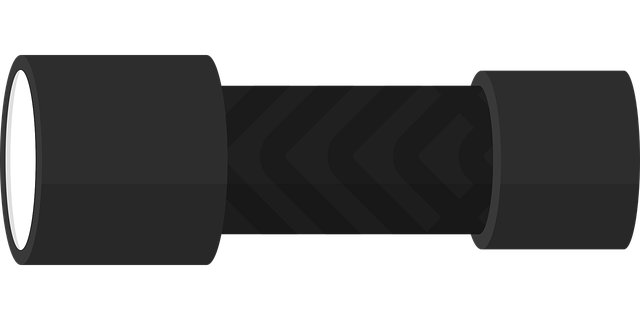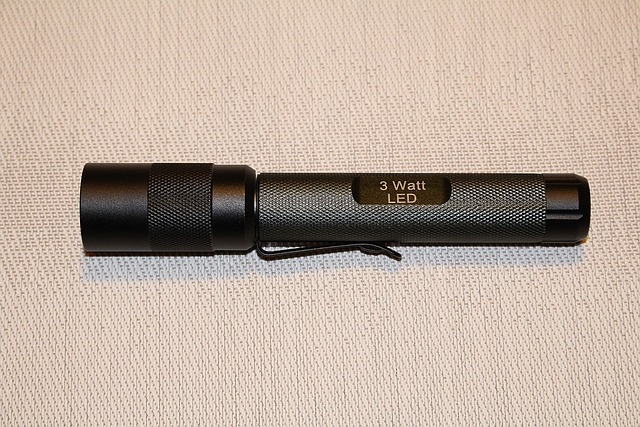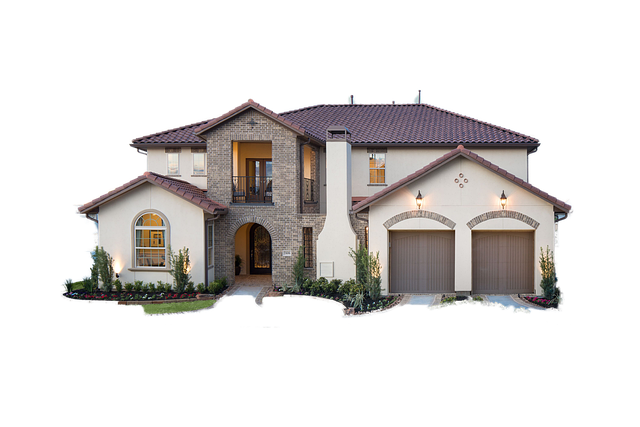When considering flashlights for home use, rechargeable models are a superior choice offering long-term cost savings and environmental benefits over single-use disposable battery flashlights. These devices boast energy efficiency, high-capacity batteries that can be recharged up to 500 times, and come with various battery types such as NiMH or Li-ion, each with different energy densities and charging cycles. For optimal performance, factors like lumen output, beam distance, and light modes should be considered, with high-lumen models being advantageous for larger spaces and adjustable intensity settings helping to manage battery life. The durability and reliability of a flashlight under various conditions, from routine indoor tasks to unexpected emergencies, are crucial. Choosing a flashlight also involves considering battery longevity, lumen output, and ease of use, with advanced LED technology providing reliable bright light for diverse situations. It's important to select a model that suits your needs in terms of size, design, and adaptability to different tasks, ensuring it is impact-resistant, weatherproof, and provides adjustable brightness settings to conserve energy. By doing so, you'll have a dependable, eco-friendly, and durable lighting solution for home safety and preparedness. Investing in a high-quality rechargeable flashlight for home use represents a wise decision for maintaining a safe and well-prepared household while promoting sustainable practices.
Explore the transformative shift towards energy-efficient lighting with our comprehensive guide on flashlights for home use. Rechargeable flashlights stand out as a sustainable and cost-effective solution, offering a bright alternative to their disposable battery counterparts. This article delves into the advantages of making the switch, highlighting key features that define high-quality options. We also examine the environmental benefits, provide tips on maximizing energy savings, and offer maintenance advice to ensure long-lasting performance. Additionally, we compare top-rated models to assist you in selecting the best rechargeable flashlight for your home, all while emphasizing the importance of sustainable practices in everyday appliances.
- Understanding Rechargeable Flashlights: A Guide for Homeowners
- The Advantages of Rechargeable Flashlights Over Disposable Batteries
- Key Features to Look for in High-Quality Rechargeable Flashlights for Home Use
- The Environmental Impact of Switching to Rechargeable Flashlights
- How to Maximize Energy Savings with Your Rechargeable Flashlight
- Maintenance and Care for Long-Term Reliability of Home Rechargeable Flashlights
- Comparing the Best Rechargeable Flashlights for Home Use: A Buyer's Guide
Understanding Rechargeable Flashlights: A Guide for Homeowners

When it comes to home safety and preparedness, flashlights are indispensable tools. Among the various types available, rechargeable flashlights stand out for their energy efficiency and environmental friendliness. Homeowners should consider making the switch to rechargeable flashlights for home use, as they offer a cost-effective and sustainable lighting solution during power outages or when working on DIY projects around the house. These devices are designed with longevity in mind, featuring high-capacity batteries that can be reused hundreds of times, reducing the need to frequently purchase disposable batteries. A key advantage is their eco-friendly aspect; by opting for rechargeables, homeowners significantly cut down on battery waste and contribute to a cleaner environment.
Selecting the right rechargeable flashlight involves understanding the types of rechargeable batteries it uses—such as NiMH (Nickel-Metal Hydride) or Li-ion (Lithium-Ion)—and their corresponding energy densities and charging cycles. Additionally, the lumen output, beam distance, and light modes are crucial factors to consider for home use. High-lumen flashlights are ideal for illuminating large areas, while those with adjustable intensity settings can conserve battery life when less light is needed. Homeowners should also look for models with durable construction, as they need to be reliable in various conditions, from routine indoor tasks to emergency situations where power outages occur. By investing in a high-quality rechargeable flashlight, homeowners ensure that they have a dependable source of light that can adapt to different scenarios and save on energy costs over time.
The Advantages of Rechargeable Flashlights Over Disposable Batteries

Rechargeable flashlights offer a multitude of benefits over their disposable battery counterparts, particularly for home use where longevity and efficiency are paramount. The primary advantage is cost-effectiveness; while initial costs may be higher due to the price of rechargeable batteries or a charging station, the long-term savings are significant. Disposable batteries, though convenient initially, become increasingly expensive as they need to be replaced frequently. In contrast, a rechargeable flashlight can be used repeatedly without the need for frequent battery purchases, making it an economical choice for households.
Furthermore, from an environmental standpoint, rechargeable flashlights are more sustainable. They reduce the amount of waste generated by disposable batteries, which are often harmful to the environment due to their toxic composition. The energy efficiency of rechargeable batteries means that less energy is consumed over time, and with advancements in battery technology, these flashlights provide reliable illumination for extended periods, often with brighter outputs than their disposable equivalents. For home use, where power outages can be a concern, having a reliable light source that doesn’t rely on the availability of disposable batteries is a significant advantage. Rechargeable flashlights ensure that when the lights go out, your home stays well-lit and prepared.
Key Features to Look for in High-Quality Rechargeable Flashlights for Home Use

The Environmental Impact of Switching to Rechargeable Flashlights

opting for rechargeable flashlights over their single-use counterparts significantly reduces the environmental impact associated with battery disposal and production. Traditional alkaline batteries, once depleted, contribute to landfill waste, releasing harmful chemicals and heavy metals into the environment. In contrast, rechargeable flashlights, particularly those powered by rechargeable lithium-ion or nickel-metal hydride batteries, offer a sustainable alternative. Their long-term use reduces the frequency of battery replacements, minimizing waste and lowering carbon footprints. For homeowners, this transition not only ensures a consistent light source during power outages or emergencies but also contributes to a cleaner, greener environment by mitigating the pollution from battery manufacturing and disposal. The shift towards rechargeable flashlights for home use is a tangible step towards sustainability, emphasizing the importance of responsible energy consumption and waste management in everyday products. By adopting this eco-friendly practice, households can significantly cut down on their environmental footprint while still enjoying reliable illumination when needed most.
How to Maximize Energy Savings with Your Rechargeable Flashlight

When utilizing flashlights for home use, the key to maximizing energy savings lies in optimizing their usage and maintenance. To ensure your rechargeable flashlight is as efficient as possible, start by fully charging it during times when electricity rates are lower, such as off-peak hours. This practice can significantly reduce your energy bill. Additionally, avoid draining the battery completely between uses, as this diminishes its capacity over time. Instead, use the flashlight for tasks that do not require its full power, conserving energy and extending the lifespan of the battery.
Moreover, selecting a flashlight with an energy-efficient design is crucial for long-term savings. Look for models with LED bulbs, as they consume less power than traditional filament bulbs and provide a brighter, longer-lasting light. Also, consider flashlights that offer adjustable brightness settings; using a lower lumen setting for routine tasks can save energy compared to the higher settings needed for more demanding situations. Properly maintaining your flashlight by cleaning its lens regularly and storing it fully charged and in a cool, dry place will also help maintain its efficiency. By adopting these practices, you can ensure that your rechargeable flashlight remains a cost-effective tool for home use, ready to provide illumination when needed.
Maintenance and Care for Long-Term Reliability of Home Rechargeable Flashlights

Regular maintenance and careful handling are pivotal for the long-term reliability of your rechargeable flashlights, particularly when they’re used for home purposes. To maintain peak performance, it’s advisable to inspect each flashlight after every use. Check for any signs of wear on the casing, lens, and connections. Dust and debris can impede functionality, so gently clean the exterior with a soft, dry cloth and use a brush to remove grit from the threads and battery compartment.
For batteries, adhere to the manufacturer’s recommendations regarding charge cycles and storage conditions to prolong their lifespan. Avoid overcharging, as this can degrade the cells over time. It’s also wise to fully discharge the batteries before recharging them to prevent memory effect, which can shorten their capacity. Storing your flashlights with a partial charge over extended periods can reduce battery health, so ensure they are completely discharged and then properly charged before putting them away for an extended period. Regularly testing the lights under various conditions will help you identify any potential issues early on, ensuring that when you need them most, your rechargeable flashlights for home use will be ready to provide reliable illumination during power outages or emergency situations.
Comparing the Best Rechargeable Flashlights for Home Use: A Buyer's Guide

When selecting a rechargeable flashlight for home use, it’s crucial to consider several factors that will influence its performance and suitability for various tasks. Among the most important aspects are battery life, lumens output, durability, and user-friendliness. High-quality flashlights for home use often come with advanced LED technology, offering bright light that can last for hours on a single charge, which is essential for unexpected power outages or late-night assignments. Additionally, look for models that feature multiple brightness settings to conserve energy when full beam isn’t necessary and to extend the battery’s lifespan.
Durability is also paramount, as home flashlights need to withstand daily use and storage. A robust build with impact-resistant materials ensures the flashlight can endure accidental drops or rough handling without compromising its functionality. Moreover, weatherproofing is an important feature for maintaining light in challenging environments like a damp basement or during a storm. Consider the size and design as well; compact models are ideal for easy storage and quick access, while larger flashlights may offer longer battery life and more robust construction. When comparing the best rechargeable flashlights for home use, it’s essential to balance these features with your specific needs and preferences to ensure you invest in a product that will serve you well for years to come.
In conclusion, rechargeable flashlights represent a cost-effective and environmentally responsible choice for homeowners seeking reliable illumination. By opting for flashlights for home use with rechargeable batteries, one not only contributes to reducing waste but also enjoys long-term savings and consistent performance. The key is selecting high-quality models that offer desirable features such as energy efficiency, durability, and user-friendly design. Regular maintenance and proper care further ensure these flashlights remain a dependable resource during power outages or unexpected needs. With the insights provided in this guide, homeowners can confidently choose the best rechargeable flashlight to meet their requirements, ensuring they are well-prepared while minimizing their ecological footprint.
